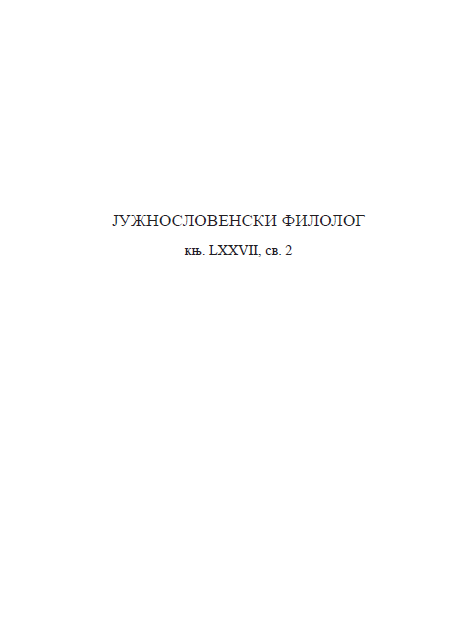ЛИНГВИСТИЧКО ИСТРАЖИВАЊЕ ДВОСЛОЖНЕ ИЛИ ЖЕНСКЕ РИМЕ У СРПСКОЈ ПОЕЗИЈИ
A LINGUISTIC INVESTIGATION OF DISYLLABIC OR FEMININE RHYMES IN SERBIAN POETRY
Author(s): Draga S. ZecSubject(s): Serbian Literature
Published by: Институт за српски језик Српске академије наука и уметности
Keywords: sound repetition; rhyme; feminine rhyme; domain of rhyme; word stress; demarcative function of stress
Summary/Abstract: This paper focuses on the prosodic properties of disyllabic, that is to say, feminine rhymes in Serbian poetry. On the basis of a quantitatively analyzed poetic database, which includes eight poets, four from the Romantic and four from the Post-Romantic period, we have identified word stress as a highly relevant prosodic property. The investigation of its role in creating rhyming pairs resulted in a classification of feminine rhymes into three types: resonant, semi-resonant, and non-resonant. This classification is based on the presence or absence of stress in the domain of rhyme, which begins with the rightmost strong metrical position in a line, followed by a weak final syllable. In resonant rhymes both lines that form a rhyming pair contain stress in their domains, in semi-resonant rhymes only one of the lines contains stress, while in non-resonant rhymes, stress is absent from both. The role of stress is demarcative: it signals the beginning of the domain of rhyme, thereby considerably promoting its effectiveness. The most effective are resonant rhymes, with demarcated domains in both lines, next in effectiveness are semi-resonant rhymes, with demarcation in only one of the lines, while non-resonant rhymes, which lack demarcation, are the least effective. Based on this classification, clear differences can be established not only among individual poets, but also among poetic eras. Moreover, the classification of feminine rhymes into resonant, semi-resonant and non-resonant allows for a detailed insight into their lexical composition, that is, into the prosodic profiles of words that constitute them.
Journal: Јужнословенски филолог
- Issue Year: 77/2021
- Issue No: 2
- Page Range: 127-156
- Page Count: 30
- Language: Serbian

